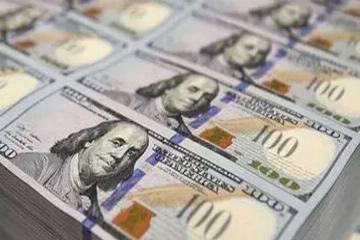Is Stagflation Looming, More Terrifying than Inflation?
Advertisements
Since 2021, the world has faced increasing inflation rates, a trend exacerbated by the ongoing pandemic and sluggish economic recoveryAs concerns over stagflation mount, this term has emerged as a buzzword, gaining search interest similar to its peak during the first half of 2008. Stagflation, characterized by stagnant economic growth and high inflation, poses significant challenges for policymakers worldwide.
1
As global economies digest the hard lessons from the past, central banks in major economies have begun tightening monetary policies in response to inflationary pressures.
South Korea's central bank has recently raised its benchmark interest rate from 0.5% to 0.75%, marking the end of a historic 15-month period of record-low interest rates
Advertisements
Similarly, central banks in Norway and New Zealand have followed suit, with Norway increasing rates by 0.25% and New Zealand raising its benchmark rate by 25 basis points for the first time in seven yearsOther countries, including Singapore, Chile, Mexico, Brazil, and Russia, have also joined the tightening cycle.
Amid this global tightening of policy, the United States, as the largest economy, remains conspicuously unmovedFederal Reserve officials have publicly insisted that current inflation levels are manageable and within controlled limitsThis stance contrasts sharply with global trends, especially as inflation statistics coming out of the U.Scontinue to raise eyebrows.
The Federal Reserve cites transient supply chain disruptions and a lack of critical goods as the underlying causes of rising prices
Advertisements
They argue that increasing interest rates in this context would not significantly affect the demand for essential consumer goods or the inflation currently being driven by supply shortagesCritics of this approach warn that if rising prices go unchecked, the U.Srisk a spiral of economic contraction and persistent inflation.
The situation is becoming increasingly criticalFor instance, the consumer price index (CPI) in the U.Ssurged by 5.4% year-over-year in September, surpassing expectations and registering an alarming fifth consecutive month of CPI readings at or above 5%, a level not seen in thirteen years.
Economists warn that stagflation can emerge when persistent inflation leads to reduced economic output and a consequential rise in unemploymentIn a scenario where action is not taken promptly, rising prices can lead to economic recession alongside inflation, forming a toxic mix of stagnation and escalating costs.
Despite the Federal Reserve's optimism, some market analysts suggest that economic indicators are signaling a downturn
Advertisements
As government stimulus measures from the pandemic era wind down, Wall Street’s economic growth forecasts have turned increasingly pessimistic.
In August, Goldman Sachs announced a downgrade of U.SGDP growth projections for the third quarter from 8.5% to 5.5%, marking the second reduction within a three-week span, as expectations for the overall growth rate for 2021 shifted from 6.4% to 6%. Similarly, Morgan Stanley revised its third-quarter GDP forecast down to just 2.9%, reflecting significant concern among major financial institutions regarding the economic recovery's viability.
Perhaps most strikingly, the Atlanta Federal Reserve has reduced its GDP growth estimate for the third quarter to a mere 0.2%, a drastic change from 1.2% just weeks before and from earlier exuberant expectations of 6%.
Moreover, a survey conducted by Bank of America's global research team revealed an alarming 14% increase in the number of fund managers anticipating stagflation by October, representing the highest level since 2012. This confluence of events leads to a painful reminder of a historical era familiar to economists and analysts, where high inflation rates coincided with reduced economic growth.
2
Are we on the verge of a once-in-a-generation stagflation? While stagflation represents a rare economic phenomenon, the fears of ordinary citizens harken back to the experiences of the 1970s in the U.S., characterized by crippling high inflation and stagnant economic growth.
During the oil crises from 1969 to 1980, the U.S
- Focus on Financial Service Details
- Unveiling Quantum Stock Volatility
- Bank of Korea Maintains Interest Rate at 3%
- Currency or Stocks: A Policy Dilemma
- Digitalization Boosts Sino-Arab Energy Ties
endured three bouts of stagflation, each progressively more severeThe Federal Reserve found itself caught in a dilemma: raising interest rates could stifle growth, yet failing to act could exacerbate inflationEventually, under the leadership of Paul Volcker, the Fed adopted a stringent monetary policy aimed at stabilizing prices, even at the cost of economic contraction.
During this challenging period, interest rates soared to an unprecedented 22.36%. The immediate repercussions included an unbearable spike in unemployment, peaking at 10.8% from 1981 to 1982—the worst economic downturn since the Great DepressionHowever, as early as 1983, inflation began to ease to more manageable levels.
As the economy struggled through these dark years, consumers faced the harsh realities of diminishing purchasing power, a frequent sight being lines of cars waiting to fill up on gasoline—a vivid image of that era.
Market analysts draw compelling parallels between today’s circumstances and those of the 1960s and 1970s:
The economic landscape today features relatively lax monetary policy, with interest rates even lower than those during the 1970s

Meanwhile, government debt levels far exceed those of the past, suggesting that rate hikes today will impact the national balance sheet even more significantly.
A continuous upwards trend in energy prices compounds these issues, with natural gas and coal prices hitting record highs—further fueled by the impending winter season, as demand for heating oil and gas surges.
Adding another layer of complexity to the current economic dynamics is the trend of de-globalization that has escalated since 2008. Nations and corporations are increasingly focused on localizing supply chains, creating inflationary pressure as goods become more costly to produce and transport.
3
If stagflation indeed materializes, how should ordinary investors navigate this tumultuous landscape? Here are several strategies to consider:
1. Historically, tangible assets tend to outperform financial assets during stagflation periods
Leave a Reply
Your email address will not be published. Required fields are marked *